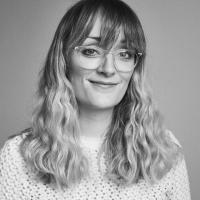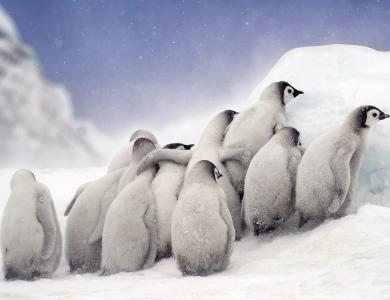For our fortnightly series Under review, we’re taking a closer look at the leading voices making up this year’s Sony World Photography Awards judging panel. This week we put the passionate Lindsay Taylor in the spotlight to discover more about her fascinating specialties within the photography industry.
Lindsay has led the strategic development of the University of Salford Art Collection since 2013, including brokering key partnerships with artists and arts organisations across the UK and increasingly China. She pioneered a new collecting policy based on three strands: Chinese Contemporary Art, About the Digital and From the North, reflecting her passion for supporting artists and for creating a collection that tells ‘a story of now’. Lindsay has expertise in curating exhibitions and developing public collections of contemporary art. She has commissioned new work by numerous artists from the UK and China and continues to contribute to national debate about developing contemporary collections. In 2014 she established a Graduate Scholarship Programme, supporting a small number of artists in their first year after graduation, now in its seventh year. Previously Lindsay has held positions at the Harris Museum and Art Gallery, Preston, Tate Liverpool and The Walker, Liverpool. She is currently a trustee of the Peter Scott Gallery Trust at Lancaster University and on the advisory board for the Grundy Art Gallery in Blackpool.
You are passionate in supporting artists and for creating a collection that tells ‘a story of now’. What has been the most effective piece of photographic work you’ve seen that’s responded to all that’s happened in 2020?
Wow, choose one photographic image for 2020? That’s impossible! So much has happened and changed in the last 12 months. It has been a devastating year for many: the famine and war in Yemen; the murder of George Floyd; the explosion in Beirut; the wild fires Australia, the US and now Siberia; and closer to home Brexit…I think it would be very difficult for one photograph to respond to all of that and more! Can I cheat slightly and select two?
Of course the biggest story of 2020 is the global pandemic, and therefore we need to consider how we will remember this. I’d like to present the work of two young photographers that we commissioned earlier this year in collaboration with Open Eye Gallery. Each responds to the COVID-19 pandemic but captures quite different experiences of the same global story.
Firstly a series of images by Wu Yue, a young Chinese photojournalist and filmmaker. She has been exploring Wuhan since late Spring to produce a new film and photographic work about the impact of the virus on the local community. I feel the images have a real sense of both beauty and horror to them. For example, this image of a security worker, shut in a booth, wearing PPE and bathed in harsh artificial light (almost as though spot lit on a stage) who is very much alone. It seems a quiet moment of reflection amid the heroic task of helping to stop the disease spreading to the communities living in the high rise flats behind, and beyond.

In contrast Kiara Mohamed’s work is unashamedly personal. Kiara is a queer, Black, Muslim artist based in Liverpool who works across photography, film making and poetry. During the pandemic Kiara had to shield for health reasons. As such, her way of connecting is through online platforms such as Zoom. This was a way of Kiara being able to live vicariously through these relationships and to have a presence in these spaces. She captured personal stories of friends, colleagues and others by photographing them on screen. In particular Kiara wanted to highlight how Covid has impacted on BAME individuals and communities.
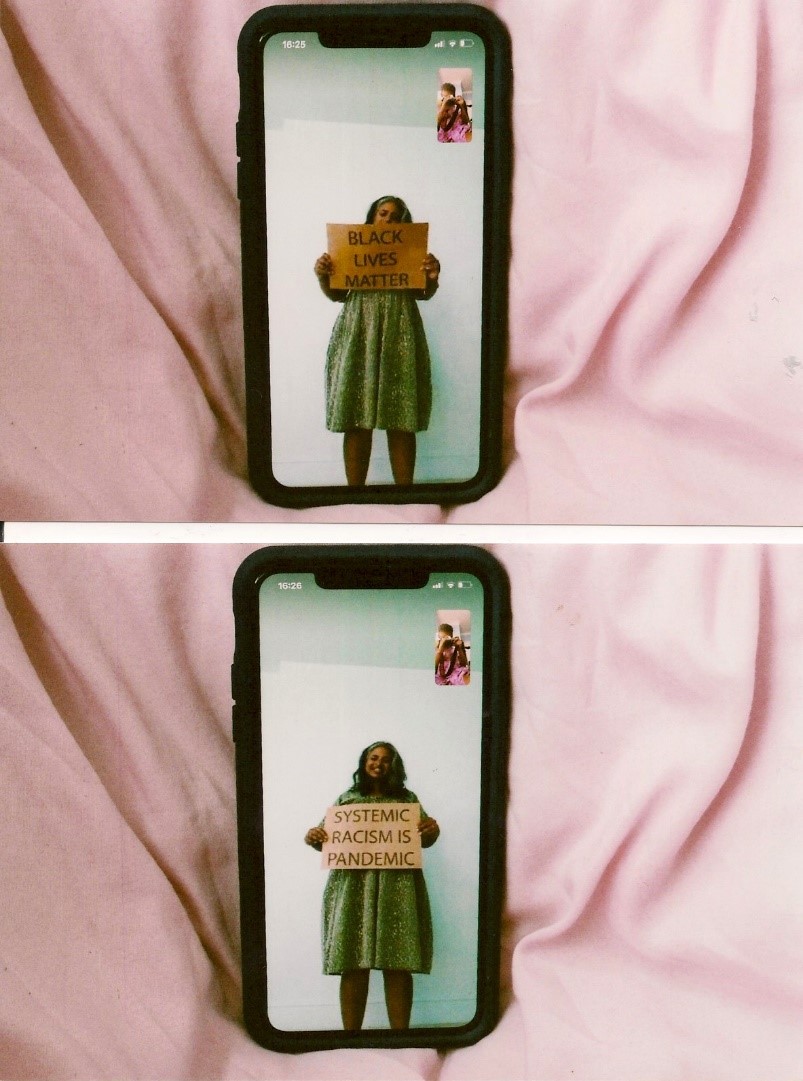
The University of Salford Art Collection has the privilege of commissioning these artists, and many others, to respond to current events. This is the responsibility of museum collections everywhere - to consider how that collection will be viewed in 20, 50, 100 years time. Perceptions and understandings change over time, and, I want to be clear, there is no ‘one’ story - there are an infinite number of stories! I’m simply trying to ensure some pertinent stories are captured and shared with future generations.
During your time at the University of Salford Art Collection you have pioneered a new collecting policy based on three strands: Chinese Contemporary Art, About the Digital and From the North. Can you tell us what appealed about these three themes? Why are they so relevant to today?
When developing the collecting policy I saw an opportunity to shape something that is distinctive and ambitious. Most museum collections are quite broad. In my view the most interesting either give a sense of the character(s) that collected them, or provide depth on specific themes. Of course this Collection belongs to the University – so it is not about me or my preferences, it has to reflect certain values to be relevant to Salford, to our students, staff and local communities. This includes enhancing our world view - understanding Salford in an international context.
Also, like academic research, a collection should add to existing knowledge and I began by researching public collections nationally, and asked ‘what isn’t being collected in a significant way elsewhere?’
The university prides itself on working in collaboration with industry and this ethos is at the heart of all we do. Most of the acquisitions we’ve made have actually been co-commissions with arts organisations or developed closely with artists to support new work. Commissioning for a collection is a risk – in that you don’t know what the final outcome will be – so not many institutions work this way. But having built a career on supporting new work and questioning standard practice in museums, I was fortunate enough to land this job in a university where taking risks is understood as something that leads to innovation!
The North of England has a vibrant arts scene and one that has always been central to the Collection. In particular I have been inspired by the role artists play in our city and so supporting and working with artists who are based in Salford and Greater Manchester is really important to me on a personal level. Salford is undergoing massive development at the moment – and, unusually, the city recognises the value of artists and the creative community, and it is making sure there is space for them (rather than forcing them out like many regeneration projects across the world). There are some fantastic artists based here – such as Mishka Henner, Rachel Goodyear and Heather Glazzard (one to watch).
Chinese Contemporary Art came about through an initial partnership with the Centre for Chinese Contemporary Art in Manchester, and is now taken forward through many collaborations both in the UK and in China – for example the ambitious programme with Open Eye Gallery in Liverpool and Shanghai Centre for Photography.
As China has an increasing influence on the global stage I thought it important to reflect that in a public collection in the UK. I built my expertise through collaborating with people who have spent their professional careers working with Chinese contemporary art and we’ve commissioned many exceptional artists such as Cao Fei, Samson Young, Luke Ching and Lu Yang. Of course in Salford it is also important for our international students, and investors in the city, to know that we are genuinely interested in their culture, and promoting better cultural understanding.
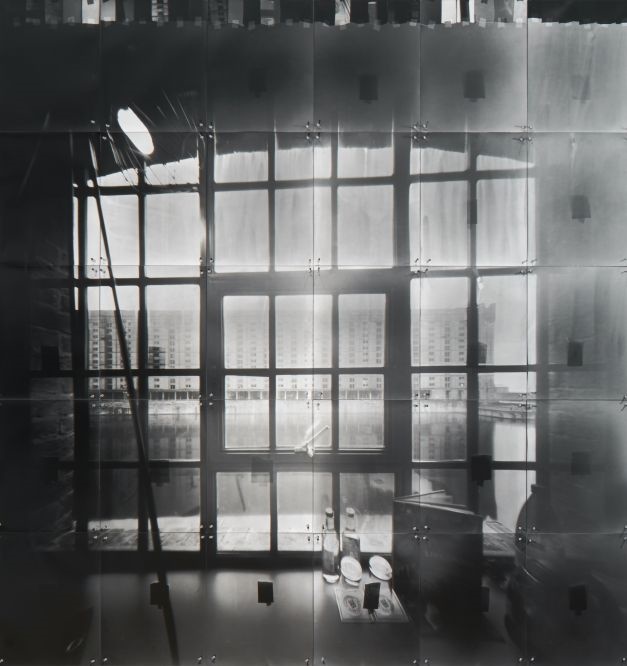
Finally the About the Digital strand is also rooted in Salford, a city with a rich industrial heritage. We now live in the digital age and Salford is home to Media City UK, a large hub for digital innovation and creativity. Many artists work in the digital domain – however museum collections are often slow to embrace new technologies – certainly in collections. I’ve been interested in this field for 15 years or so and started to work to resolve this in a previous role. There is a perception that artworks that use technology are harder to conserve. I’ve never subscribed to that – we just need to ask different questions and develop new skill sets. If we don’t collect this work now it is likely that it won’t exist down the line – we are in danger of missing out a huge chunk of artistic practice. So, although technologies become redundant, by working with artists as they make new works, we can agree parameters to enable future proofing and retain integrity. Again – it helps to be working within a University context where experimentation is encouraged! Artists in this strand include Liam Young, Rachel Maclean, Brass Art and aaajiao.
In 2014 you established a Graduate Scholarship Programme, which supports a small number of artists in their first year after graduation. What have you learned by working with these artists about the future of photography?
We are now in the seventh year of the programme which we run in partnership with Castlefield Gallery, alongside local studio providers and Redeye, the national photography network. Each cohort is different as we recruit across a number of courses. Some have come from the Photography degree, but others have studied Fine Art, Fashion Image Making and Styling, Graphic Design, and even a couple from Music and Performance courses.
Our graduates are from diverse backgrounds and I’m humbled by some of the life events they have overcome in order to get this far. What unites them though is their talent and ambition to succeed - it goes to show that there is no one ‘right’ path into a specialism. Helping them to build up their knowledge, experience and confidence feels like a real privilege.
Billions of people share their lives via photography on social media – it is the main visual communication tool for individuals today. But as with great authors and poets, photographers develop their literacy over time. I’ve been interested to see how many of the scholars engage with photography, or have expanded photography during their programme. What I learned early on, and what I pass on to the new graduates, is not to be limited or defined by the course you studied. I encourage them to be open to other disciplines and experiences as much as possible. I placed a music graduate in a studio with a fine art graduate and it was amazing what they learned from each other. The music graduate now has a successful interdisciplinary practice!
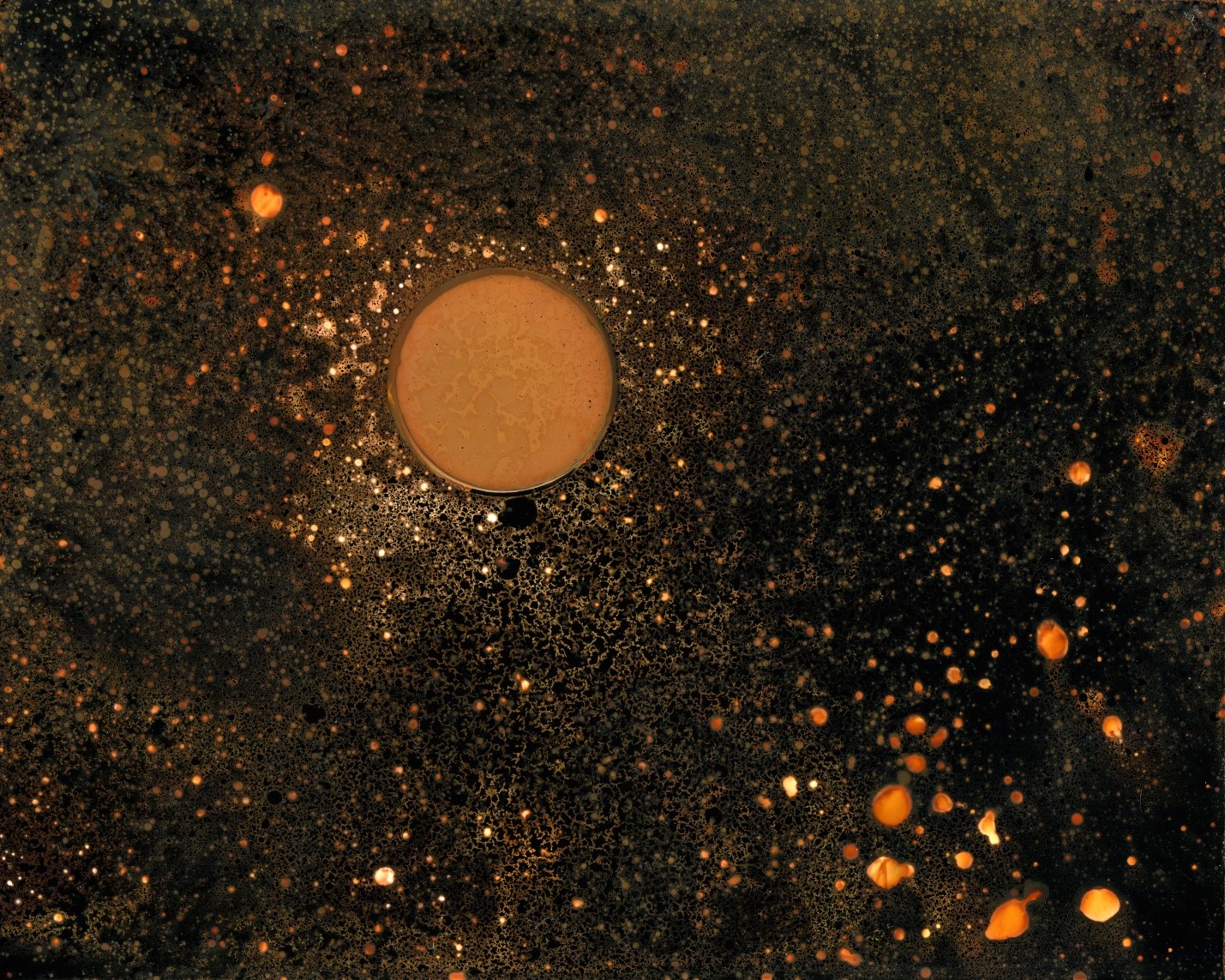
Why should a photographer enter the Sony World Photography Awards and what are your three tips for photographers thinking about entering?
It is free to enter so what do you have to lose?! Seriously it is a fantastic opportunity to get your work in front of a range of international judges who all have different knowledge, experience and interests. Professionals in the field from all over the world look at the shortlist and prize winners, so it’s a huge boost to your career if you are chosen.
It is a really democratic process – which is something I truly value. The judges are only presented with the images – no names or contextual information – so the image needs to stand out from the rest.
My top three tips would be:
- Trust your instinct, then reflect on the work with peers, colleagues, friends or family - this will help you consider an audience.
- Don’t try to guess what will appeal to the judges – we are a varied bunch.
- Be bold, take a risk. Don’t let fear of failure put you off.
What personal or professional experience, expertise and skills do you draw upon when judging submissions?
Obviously I draw upon my professional experience of working in and with museums and galleries for 25 years. My background is in art history so that’s useful, but really I think I rely on gut instinct which I’ve learned to trust throughout my career. I look for work that is innovative and experimental. This could be brave, powerful work, or work that’s more subtle on first view but packs a punch on closer inspection.
What do you hope to see from the entries submitted to the Sony World Photography Awards Professional competition?
I’m really excited about seeing the submissions. As you’ve probably picked up – I’m interested in both storytelling and thinking outside of the box. I’d like to see artists who are pushing the boundaries of what we think photography is, and can be. I hope to be challenged, intrigued, and made to both laugh and cry by the entries!
Photography has had to fight for its position within the art world, it has (and often still is, in certain spheres) seen as a lower art form. Why does art have this hierarchy, do you think? Or do you think photography should stand apart from other art forms?
I don’t believe that photography should be treated differently from any other art form. It is simply a medium which requires a different set of skills from that of a painter or a sculptor.
Historically painting and sculpture were given greater significance than other art forms, particularly in the formal settings of museums and galleries. Some of these hierarchies were influenced by what we now call ‘the art market’. Financial value was placed on the objects’ uniqueness, the fact it could not be reproduced – this, in turn, erroneously swayed many people’s definition of the ‘cultural’ value of a work. Most museums and galleries have overcome this short sightedness now and consider works against real cultural merit. Do they inspire and / or challenge us? Do they reflect meaningfully on our time or history? Today all the major institutions collect and exhibit photography.
One key advantage of photography is its very egalitarian and accessible nature. The digital age has allowed for diverse voices to be heard and the world to constantly be interpreted in multiple ways. With this comes a problem, we are bombarded with photographs on a daily basis and sometimes it feels overwhelming! Now, more than ever, we need mechanisms to reflect on the culture of our time.
That is why I think it’s vital to have photography specific exhibitions and competitions like the Sony World Photography Awards. As a curator I’m always looking for new talent, for artists I don’t know and who I think have something significant to say. It all comes back to storytelling.
How can we make art and photography less elitist?
That feels like a loaded question – as I said earlier I think that the ‘making’ of photography is now egalitarian. I think you mean how do we make ‘looking‘ at art and photography in museums and galleries, or buying art, less elitist? Much work has been undertaken in the UK to make museums and galleries more relevant to local and more diverse audiences – but there is still a massive way to go. I think it comes down to two things: relevance and education.
Museums and galleries need to be relevant in order to be valued by their local communities. One way of doing this is through socially engaged practice – where the expertise of the artists meets the life experience of the community. Some of the most interesting artists now are working in this way. Through building relationships and trust, it is possible to break down perceptions that museums and galleries are elitist. This can take place over long periods of time where the community has the chance and the autonomy to feel that they can make change and share their thoughts through photography. I’m delighted that at the University of Salford we provide an MA programme in Socially Engaged Photography in partnership with Open Eye Gallery, now entering its third year.
The other way is through formal education. If we valued creativity and creative thinking, and embedded this across all subject areas, it would elevate art lessons and reduce perceptions of elitism. Sadly, in the UK it feels like creativity is being squeezed out of the schools curriculum at the moment – whereas a great emphasis on creativity is actually being developed in some growth economies.
Discover more about the University of Salford Art Collection here.

